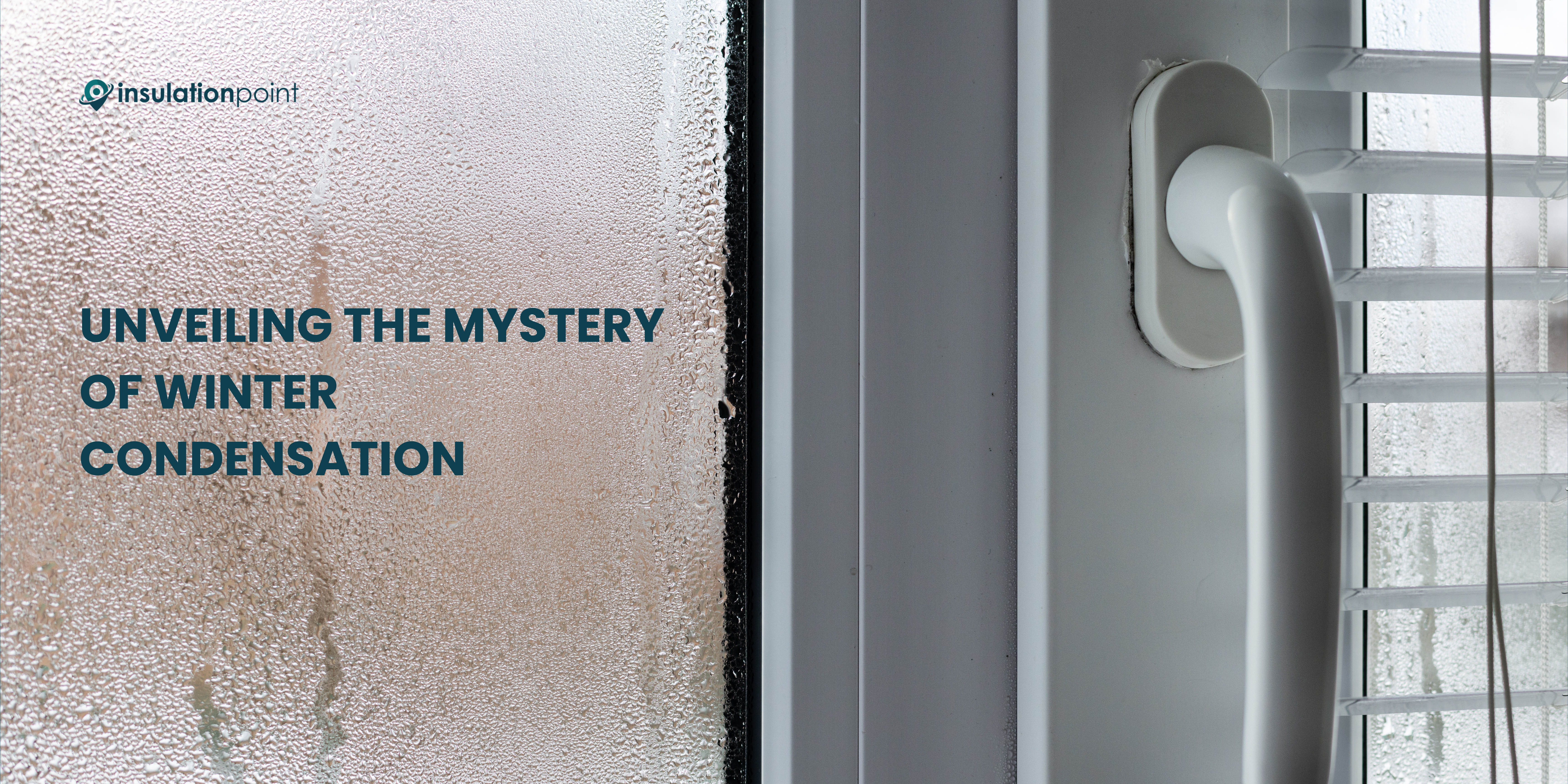Unveiling the Mystery of Winter Condensation


Introduction
As winter sets in across the UK, households often grapple with an unwelcome intruder: condensation. The seemingly innocuous water droplets on windows and walls can become a pervasive problem, causing discomfort and potential damage. In this comprehensive guide, we'll delve into the intricacies of winter condensation, unravel its underlying causes, and explore practical solutions with a focus on the effectiveness of insulation.
Understanding Winter Condensation
Condensation materialises when warm, humid air encounters a cold surface, prompting the conversion of water vapour into liquid. During winter, the contrast in temperature between the heated indoor spaces and the chilly exterior fosters an environment conducive to the occurrence of condensation.
Causes of Winter Condensation
Insufficient Ventilation:
Poor ventilation allows moist air to linger, increasing the likelihood of condensation. Areas like kitchens and bathrooms, where activities generate significant moisture, are particularly vulnerable.
Humidity from Indoor Activities:
Everyday activities, such as cooking, showering, and drying clothes, contribute to indoor humidity. Without proper ventilation or moisture control, these activities can amplify condensation.
Inadequate Insulation:
Homes lacking proper insulation are more susceptible to temperature differentials, creating cold surfaces where condensation can occur. Insufficient insulation in walls, roofs, and windows allows warm air to meet cold surfaces, fostering moisture buildup.
Practical Tips to Reduce Winter Condensation
Ventilation Strategies:
Invest in extractor fans for kitchens and bathrooms to improve ventilation. Regularly open windows, even during winter, to facilitate fresh air circulation.
Control Indoor Humidity:
Be mindful of activities that generate moisture and use lids on pots while cooking. Contemplate the utilization of a dehumidifier to uphold ideal levels of indoor humidity.
Insulate Windows:
Opt for thermal or insulated curtains to create a barrier between warm indoor air and cold window surfaces. This helps prevent condensation on the glass.
Seal Leaks and Gaps:
Inspect windows and doors for gaps or leaks, sealing them to prevent cold air infiltration. Proper insulation around these areas is crucial in minimizing the risk of condensation.
Insulation: A Long-Term Solution
Enhanced Thermal Efficiency:
Quality insulation significantly improves a home's thermal efficiency, maintaining consistent indoor temperatures and reducing the likelihood of condensation.
Moisture Control:
Insulation acts as a barrier, preventing warm indoor air from reaching cold surfaces. This control over temperature differentials helps manage moisture levels, minimizing condensation.
Energy Savings:
Beyond condensation prevention, insulation contributes to energy efficiency. Well-insulated homes require less heating, leading to reduced energy consumption and lower utility bills.
Conclusion
Navigating winter condensation involves a combination of practical measures and strategic investments. While short-term solutions like better ventilation and humidity control play a crucial role, the long-term effectiveness of insulation cannot be overstated. By addressing the root causes and investing in quality insulation, homeowners can not only bid farewell to the immediate discomfort of condensation but also create a warm, dry, and resilient living environment for the winter months and beyond.








